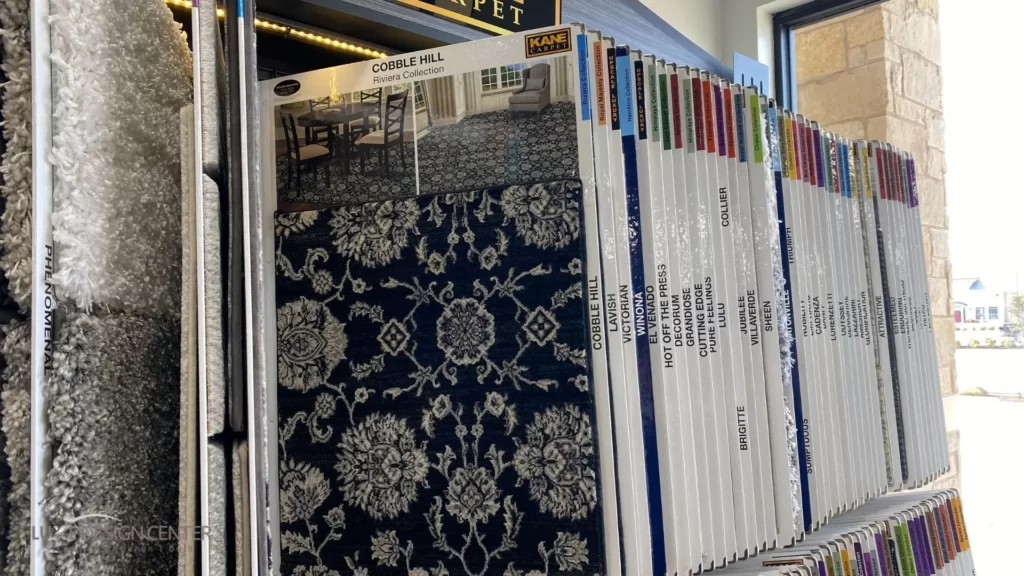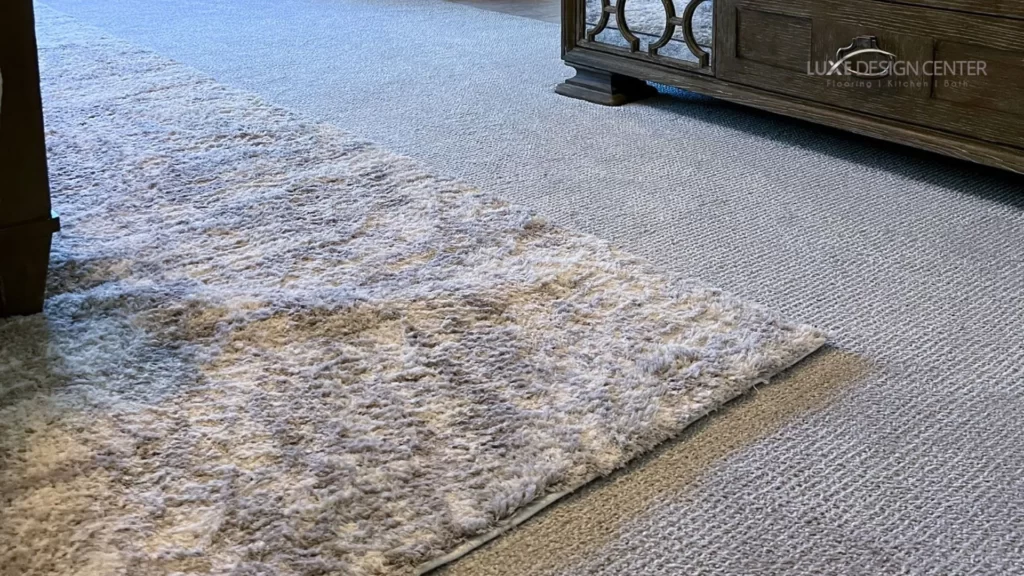It’s official, you’re getting new flooring and you have decided to go with carpet! This is the first of many decisions to make when upgrading your flooring. Just as important as selecting the right color or pattern to go with your space, you will need to decide the type of carpet and material. From hand-made wool to plush synthetics to durable sisal, there are many factors to consider when choosing a carpet.
It could seem a little overwhelming and even daunting, but that is where the experts at Luxe Design Center step in. So never fear, by the end of this you will be ready to roll up your sleeves, roll out the carpet, and get to carpeting! At least in theory anyway.
There are 3 primary things to consider when choosing carpet.

- Construction; The way your carpet is made will affect how it looks and feels underfoot. From plush and luminous, to tight and thick. Think about whether you prefer something flatter and more stable or a soft pile you can sink your toes into.
- Capacity; In what capacity are you utilizing the space? Who will be walking on the carpet? If you have children, or you like to entertain, you will need something that is more durable and easier to clean. If you have pets, you may want to avoid looped carpets, they tend to snag easier.
- Cost; What is your budget? The cost of a carpet will depend on several factors, including the type of carpet, its size and the number of rooms it covers.
Why Choose Carpet Over Other Floorings?

For starters, it is a perfect choice if you tend to walk around barefoot. Carpet is a perfect combination of form and function, making a room more comfortable and insulating your floors at the same time.
According to some research, most homeowners prefer to choose carpets for comfort, warmth, and feel. There are also more practical reasons to pick carpet over other flooring types, including:
- Soundproofing abilities
- Offers a non-slip surface on stairs
- It can easily lift to do work on floorboards
- Objects dropped on a carpet are less likely to break than those dropped on a wooden floor.
Selecting a Carpet Pile

To assess a carpet’s durabilities there are two main criteria to measure, its pile height and density. The carpet pile describes its individual fibers, which can be looped or cut. Heavy and dense carpets are generally more durable and hard-wearing than those with shaggy, loose threads.
There are many ways to check carpets’ durability before buying them, but the simplest is to press your thumb into the carpet pile. The easier it springs back and recovers, the more flexible and dense it is.
You can also have a look at the back of the carpet to see how strongly packed the tufts are or check their weight on the back of your sample swatch. Carpets with loose, long stands are less durable and lighter than short and denser ones.
Tufted and Woven Carpets

There are two main types of carpets in the US market: Tufted and Woven. Most carpet sold in the US is tufted. The major difference is the manufacturing process, woven carpets are labor-intensive and a bit more costly, while tufted carpets are easier to produce. Let’s look at a few other differences.
- Woven Carpets
Woven carpets use traditional methods dating back to the 16th century. Woven carpets have a reputation for rich colors, high quality, and durability. This makes woven carpets a popular option for well-trodden areas that are regularly on display, such as living rooms and hallways.
There are two major types of woven carpets:
- Wilton carpets form on a loom, which weaves the yarn in a continuous strand.
- Axminster carpets have weaved fibers in and out through the backing material.
- Tufted Carpets
Tufted carpets are the most popular in the US. Tufted carpet starts with a machine that punches pile yarn into the base material. Tufted carpets can have either cut or looped piles, meaning they can have very different appearances in a variety of styles and materials.
Picking the most excellent carpet materials

Synthetic materials such as nylon and polypropylene are budget friendly, stain-resistant, and less prone to mildew and mold. Natural fibers such as sisal and wool can be more expensive, are more prone to staining, and attract insects, but the fibers are resilient and last longer.
There is a split between people who favor synthetic and natural materials. Some people choose a mix of wool and synthetic which can offer the benefits of a natural carpet with some useful synthetic qualities such as increased stain resistance.
- Polypropylene
Polypropylene is a perfect choice if you are on a budget. This material feels soft to the touch and is stain resistant. It does have a tendency to attract oils, so any oil-based stains on these polypropylene carpets will be tough to remove.
- Nylon
Nylon, formerly known as polyamide, is the most durable synthetic fiber. Nylon can stretch without losing its shape, making it a perfect choice for rooms where furniture is frequently moved around, such as dining rooms.
- Polyester
Polyester is a popular material because it feels and looks most like wool, and this material is usually used as part of a mix with natural wool. It is manufactured from recycled plastic bottles so that it can be eco-friendly. Like other synthetic materials, its stain resistance is a major benefit.
- Wool
Wool is a natural and durable material and provides good heat and sound insulation. Wool carpets can absorb and release moisture in the room, controlling humidity levels. Wool carpets can be more expensive than synthetics, and colors can fade over time in areas consistently exposed to sunlight.
Wrapping Up,
In conclusion, nylon and polypropylene are excellent materials for homeowners, and they are stain-resistant and durable, but most significantly, they are less prone to scratches. Luxe Design Center is a one-stop service if you are looking for professionals to help you pick the best carpet material for your home.
